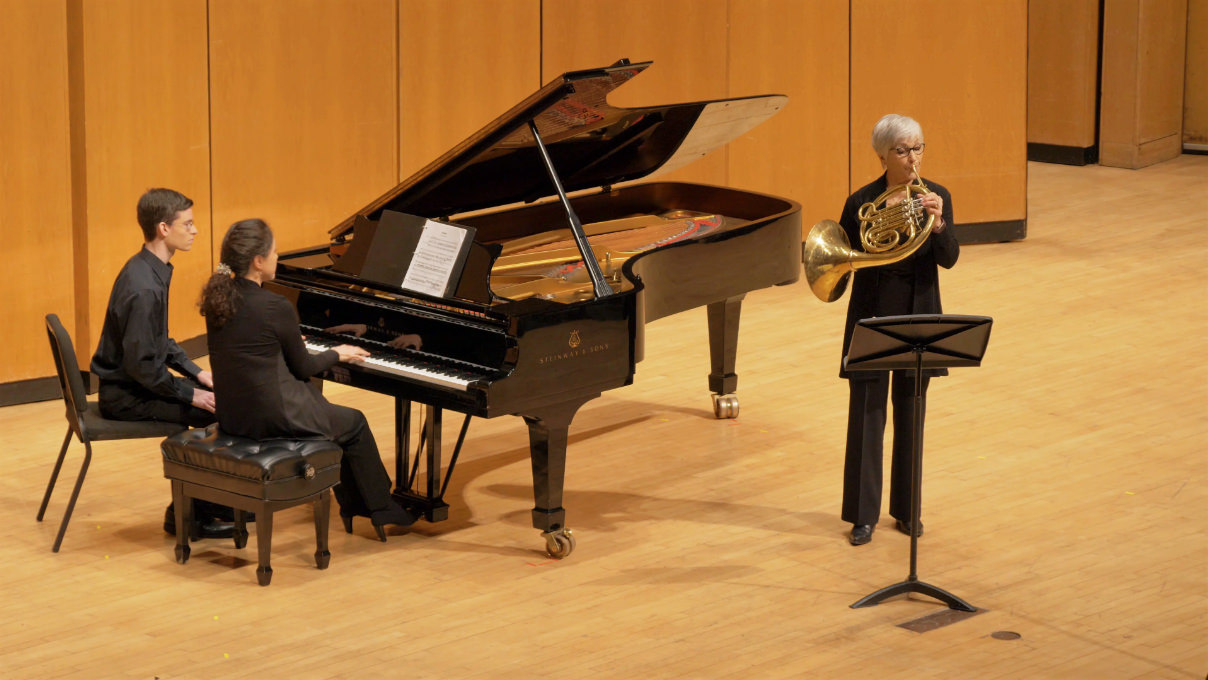Beethoven - Sonata for Horn and Piano in F Major, Op. 17
January 24, 2020
Professor of horn Gail William and pianist Kay Kim perform Beethoven’s Sonata for Horn and Piano in F Major, Op. 17, as part of the 24th annual Winter Chamber Music Festival.
Allegro moderato
Poco Adagio, quasi Andante
Rondo: Allegro moderato
Giovanni Punto was one of the most colorful musical characters in Enlightenment Europe. His reputation as a virtuoso spread quickly: he toured throughout Europe as a soloist (playing concertos of his own composition) and held positions with several important court orchestras. The young Mozart met Punto in Paris in 1778 and was so inspired by the hornist’s playing that he composed for him the Sinfonia Concertante for Oboe, Clarinet, Bassoon, Horn, and Strings.
After some years in Paris, Punto arrived in Vienna early in 1800 and met Beethoven. The hornist scheduled a public concert for April 18 in Vienna’s Court Theater and invited his new friend to compose a horn and piano sonata for the occasion; Beethoven agreed to write the piece and to join Punto on the program.
The instrument for which Beethoven wrote his Op. 17 Sonata was the valveless natural horn, which required agile hand-stopping to produce most of its chromatic pitches. Punto was said to have had a great influence on the development of the natural horn’s extended technique, and Beethoven’s music paid a fine tribute to the mastery of his playing.
The first of the Horn Sonata’s three movements is in a compact sonata form, initiated by a solo fanfare from the horn. The second movement is little more than a slow-tempo preface to the finale, a joyful rondo filled with wide melodic leaps and dashing figurations
